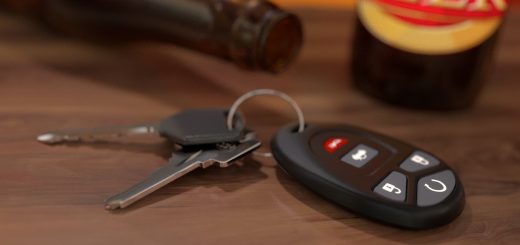Car Phones to Cell Phones – Have the Times Really Changed?
How cell phones have changed in the last thirty years – though back then, they were “cellular telephones.” I remember the scene in John Hughes’ film, Sixteen Candles where the Geek, played by Anthony Michael Hall, is driving the Prom Queen home. He can’t drive and she can’t sit up straight. For those who have seen the film, this is the time where she feeds him her birth control pills. It is not the eighties outfits that date that scene, but rather the moment when the car phone rings. Not the cell phone, but the car phone. The owner of the car, the Hunk’s father, showcases his career success not by his Rolls Royce, but by his car phone. The fact that the car phone rings in the early morning of a weekend night (rather comically), so that Anthony Michael Hall picks it up, shows the pressing and important nature of his business.
The mere thought of car phones today seems completely absurd. The transition from car phones to cell phones seemed natural in the nineties. It wasn’t until 2009, when the new provision to the Highway Traffic Act, RSO 1990, c H.8 regarding cell phone use while driving came into effect, that the scene was officially elevated to being legally out-dated.
In April 2009, the Countering Distracted Driving and Promoting Green Transportation Act, (“Bill 118“), received Royal assent. The bill amends s. 78 of the Highway Traffic Act, to “prohibit the use of devices with display screens and hand-held communication and entertainment devices.” It effectively limits the civilian usage of cell phones in vehicles, making their use while driving a relic, alongside car phones, shoulder pads and terrible perms.
As this is a new law, there are still issues of statutory interpretation that need ironing out. The Ontario Court of Justice had the opportunity to weigh in on the interpretation of the word “holding” in the context of a handheld wireless communication device, in R v Kazemi, 2012 ONCJ 833.
Background
In April 2010, an on-duty police officer noticed that a driver of an SUV was glancing down and back up at a traffic light several times. The police officer believed she was dialling numbers in her cell phone – though he didn’t observe it. When he came to the car, he saw the driver holding an open Nokia flip phone in her hand. Despite holding the phone, the driver claimed she was not using her cell phone. The officer did not examine the phone to determine whether or not the phone was capable of sending or receiving messages. The driver, Khojasteh Kazemi, testified that she was driving home from work with the Children’s Aid Society in Oshawa. The phone was on the passenger seat and dropped to the floor, but because she was driving, she could not pick it up. She picked it up at the intersection the police officer saw her at. She claimed that the phone was a safety tool, and she did not even know how to send text messages. Her cell phone records confirmed that she was not using her cell at the relevant time. She was simply retrieving it when the officer came to her window. It was, quite simply, a case of bad timing.
The Justice of the Peace found that the offence was made out if the accused was either holding or using the device (para. 6). Indeed, the offence was made out so long as the phone had the capability of operating. Kazemi was fined $200 for violating s. 78.1(1) of the Highway Traffic Act, which states that:
No person shall drive a motor vehicle on a highway while holding or using a hand-held wireless communication device or other prescribed device that is capable of receiving or transmitting telephone communications, electronic data, mail or text messages.
At The Ontario Court of Justice
Justice Nakatsuru of the Ontario Court of Justice delved into the statutory interpretation of the phrase “while holding or using a hand-held wireless communication device or other prescribed device” as per s 78.1(1). He affirmed that it must be “interpreted in a manner that has regard to the design and function of such device” (para 23). To be “holding,” there needs more than simply touching or briefly handling the device. Going to the purpose of the statute, he noted that simple and short mental distractions or physical interferences with the ability to drive were not meant to be caught by the provision. There needed to be actual sustained physical holding.
Kazemi only moved her cell phone from the floor of the SUV where it had fallen back to the passenger seat at a stop light when it was safe to do so. The judge found that the Justice of the Peace erred by finding that the offence came from the mere fact of “holding” her cell phone. Justice Nakatsuru found that “a momentary handling of a cell phone does not fall within the meaning of ‘holding’ as found in the provision” and as such, the conviction was unreasonable.
Drivers, Don’t Be Tempted
This decision highlights the practicality of the law. The purpose of the amendment is to keep drivers’ eyes on the road. Cell phones are not toxic in the car, and it is legally acceptable to briefly touch them. That being said, noticing the flashing red LED light on your phone notifying you of a message, or hearing a chime on your phone informing you that an email came through can be the temptation that you can’t resist. A momentary movement of your phone may be unavoidable to open up that message, and therefore, may lead you to violate s. 78.1(1) of the Act. Moreover, it appears as though there is a great deal of discretion in determining what is considered “holding.” While the offence requires “more than merely toughing or briefly handling of such a device,” how much more is required, remains unclear.
The new law tries to “counter distracted driving,” and makes no problem with drivers talking on their phones – so long as their hands are on steering wheels, and eyes are on the road (whether or not talking to a person not in the car affects a driver’s focus is a whole other argument). Perhaps then, instead of drivers switching to Bluetooth technology and fancy ear pieces while driving, they should simply install the car phones of the 80s – no texting, no emails, just good old fashioned calling. The Highway Traffic Act wouldn’t mind, so long as you get your passenger to dial the number.







Join the conversation